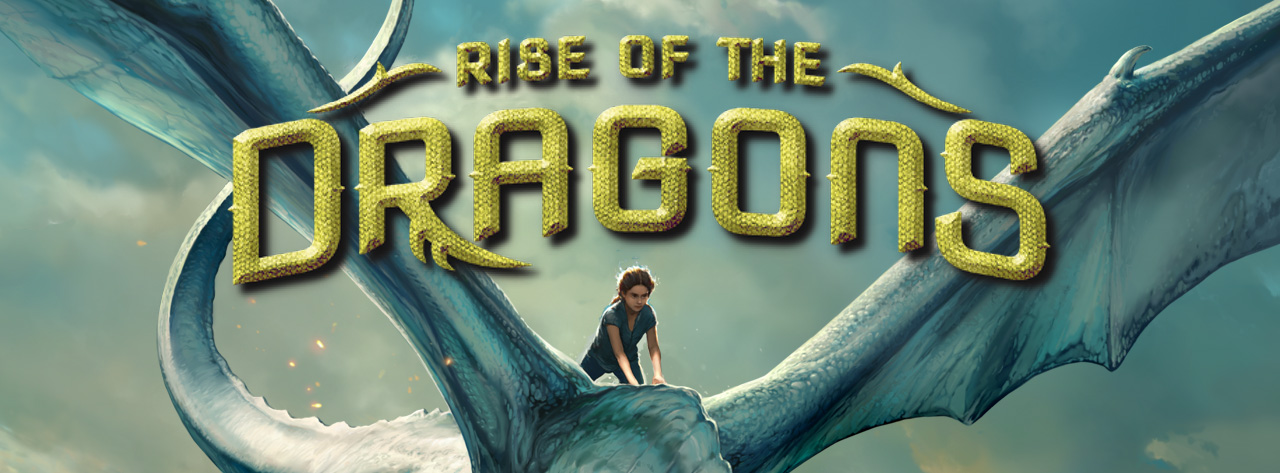Rise Of The Dragons Book Series

It’s a high time for high fantasy. Novels about wizards outsell (and often outshine) the most glittering literary fiction titles; the contemporary romantic hero generally sports a pair of fangs; and even now the five remaining earthlings who haven’t read “The Lord of the Rings” are being hunted down and put to the sword. Yet for all of fantasy’s successes, there remains a chip on the spaulder of the genre. As Michael Agger put it in 2009, reviewing Lev Grossman’s Harry Potter-influenced novel: “Perhaps a fantasy novel meant for adults can’t help being a strange mess of effects. Sounds like fun, but aren’t we a little old for this?” And with that, hundreds of years of fantastical writing are reduced to 20-sided dice, pencil nubs, half-filled Coke cans and the crushing realization that no, your elven rogue’s dagger is not going to be effective against green slime. There are reasons to think this view of fantasy is needlessly limited, and one of the most obvious is the titanic success of George R. Martin, the present and future king of The New York Times best-seller list.
In this illustrated series by Tracey West, early readers can start their love of fantasy with dragons, a king, wizards, and magic. Rise of the Earth Dragon: Eight-year-old Drake is taken to the king's castle to be trained as a Dragon Master. DreamWorks Dragons: The Series (Rated TV-PG for moderate violence) is a television series based on the animated film and its sequel, that aired on Cartoon Network. It began airing on Cartoon Network on Tuesday, September 4, 2012, releasing a new episode every Wednesday. Producer Tim Johnson.
Martin’s immensely popular new book, follows “A Feast for Crows,” which in turn followed “A Storm of Swords,” “A Clash of Kings” and “A Game of Thrones” (even if you admire these books, as I do, it’s hard to argue that Martin has A Knack for Titles). Thus far, the series has included a boy being thrown off a balcony, a woman having her face bitten off, a man having his nose cut off, a girl having her ear sliced off, multiple rapes, multiple massacres, multiple snarfings of people by animals, multiple beheadings and multiple discussions of revenue streams in medieval economies. If kids are reading this stuff, God help their parents. Martin’s books are essentially the War of the Roses with magic, set largely in a land called Westeros. They are written in the third person, but each chapter takes the point of view of a single character, with several characters recurring throughout.
Of particular importance are noble families like the Starks (good guys), the Targaryens (at least one good guy, or girl), the Lannisters (conniving), the Greyjoys (mostly conniving), the Baratheons (mixed bag), the Tyrells (unclear) and the Martells (ditto), most of whom are feverishly endeavoring to advance their ambitions and ruin their enemies, preferably unto death. But as we discover, these people should be paying less attention to their own squabbling and more attention to the nearly deserted northern reaches of the kingdom. Because beyond “The Wall,” the giant construction of ice and stone that marks Westeros’s border, a race of creatures called “the Others” is preparing to. Well, it’s not clear yet, but it seems to involve turning people into zombies, which is almost worse than turning them into Lannisters. Martin possesses two virtues in abundance. Lightbot code hour walkthrough. First, he’s unapologetically coldblooded.
Westeros is a dangerous place governed by the whims of men, not the rule of law, and the first novel in his series is famous for (spoilers follow!) dispatching a thoroughly admirable major character with whom readers have been identifying for most of the book. The killing is shocking, and it’s done on the impulse of a temporarily empowered child. (The same child is poisoned two books later, so hey, all’s well that ends well.) This tendency is less in evidence in “A Dance With Dragons” — in fact, some characters are beginning to seem charmed — but at least one moment in the book will have readers saying, “No way did that just happen.”. Martin’s second virtue is a nearly supernatural gift for storytelling. All of his hundreds of characters have grace notes of history and personality that advance a plot line.
Every town has an elaborately recalled series of triumphs and troubles. Moreover, historical asides are inseparable from the books’ larger narratives, so as you’re propelled through the story, the sensation is like riding a wave that’s somehow moving away from shore, with the water beneath you growing deeper and more shadowed as your speed increases. Martin’s finest creations thus far are Tyrion Lannister, Jon Snow and Daenerys Targaryen. Tyrion is a dwarf (a human dwarf, not a Tolkien dwarf), a cynic, a drinker, an outcast and conspicuously the novels’ most intelligent presence.
Martin is probably a little too fond of him. Jon Snow is presented as the illegitimate son of the Stark patriarch, although it’s uncertain whether Stark is indeed his father. Brute force 750.
Jon is a complex, thoughtful and basically good character who leads the Night’s Watch, the garrison of former criminals and landless sons that guards the Wall and that has been reduced to a fraction of its needed strength. Jon’s leadership is the best hope of Westeros, so naturally he’s in imminent danger throughout “A Dance With Dragons.” As is Daenerys Targaryen, the former king’s youngest daughter, who has spent the previous four books in southern kingdoms raising armies to invade Westeros, but who is now slightly sidetracked by her desire to destroy the slave trade. Also, the titular dragons are hers. They turn out to be problematic.